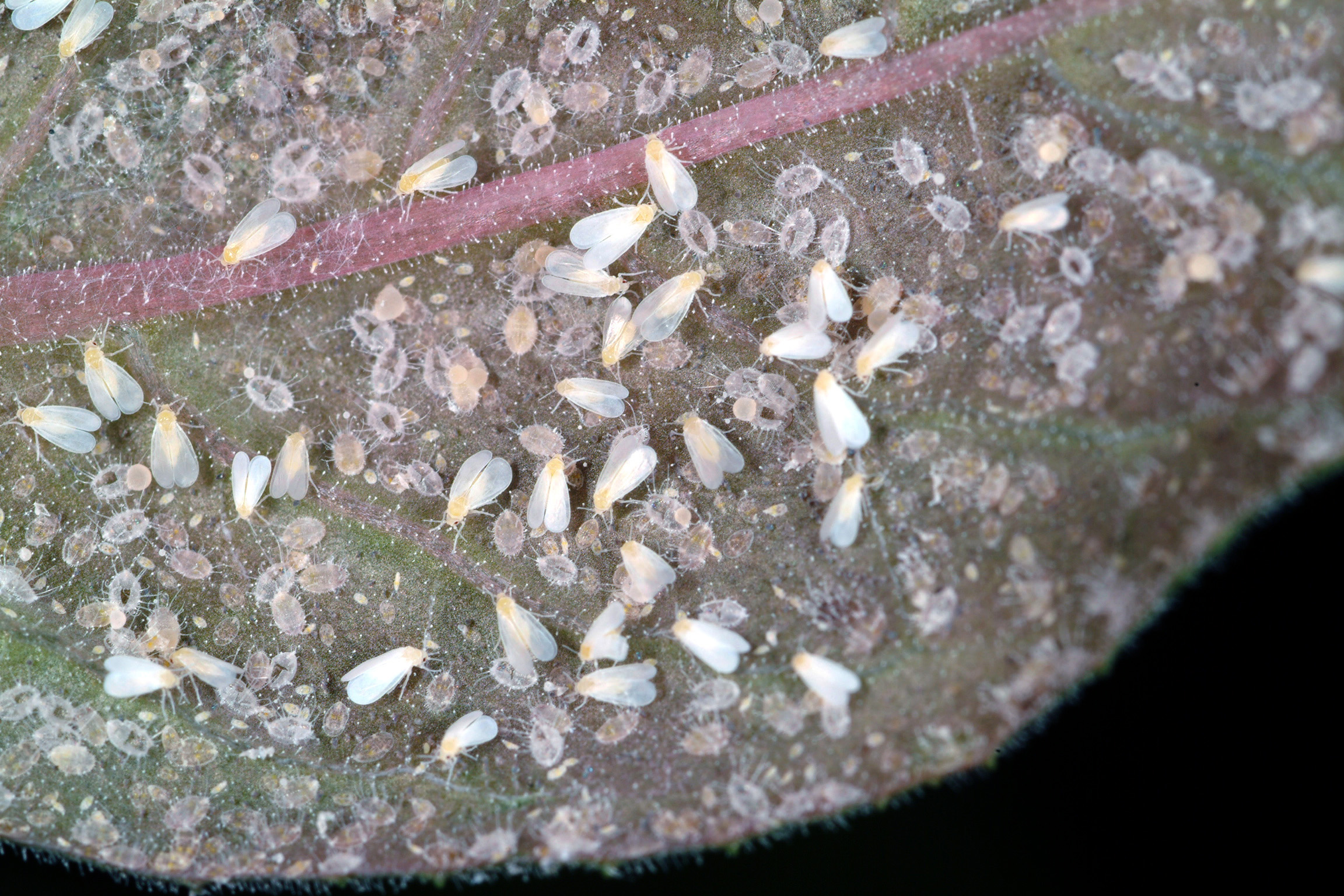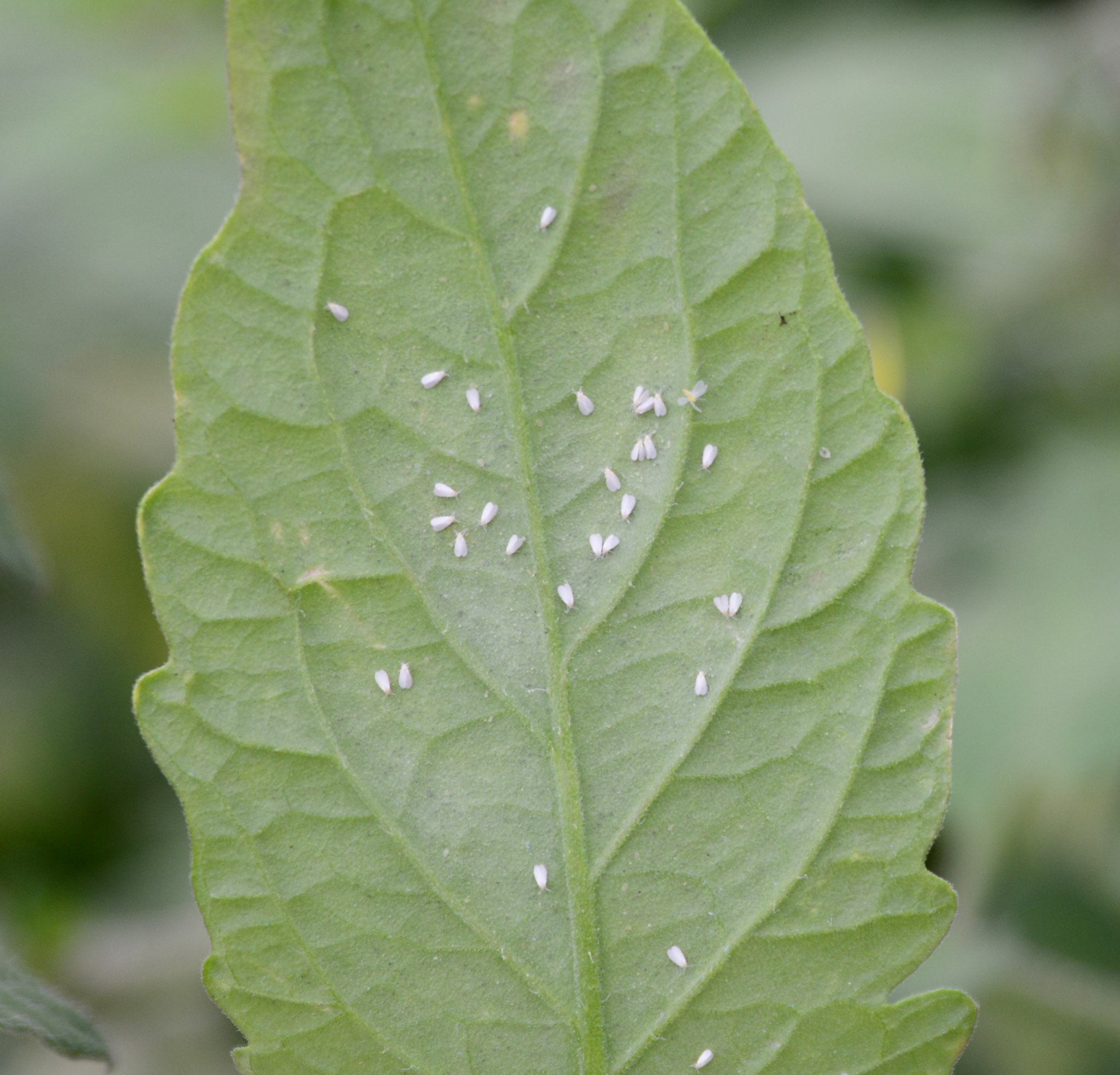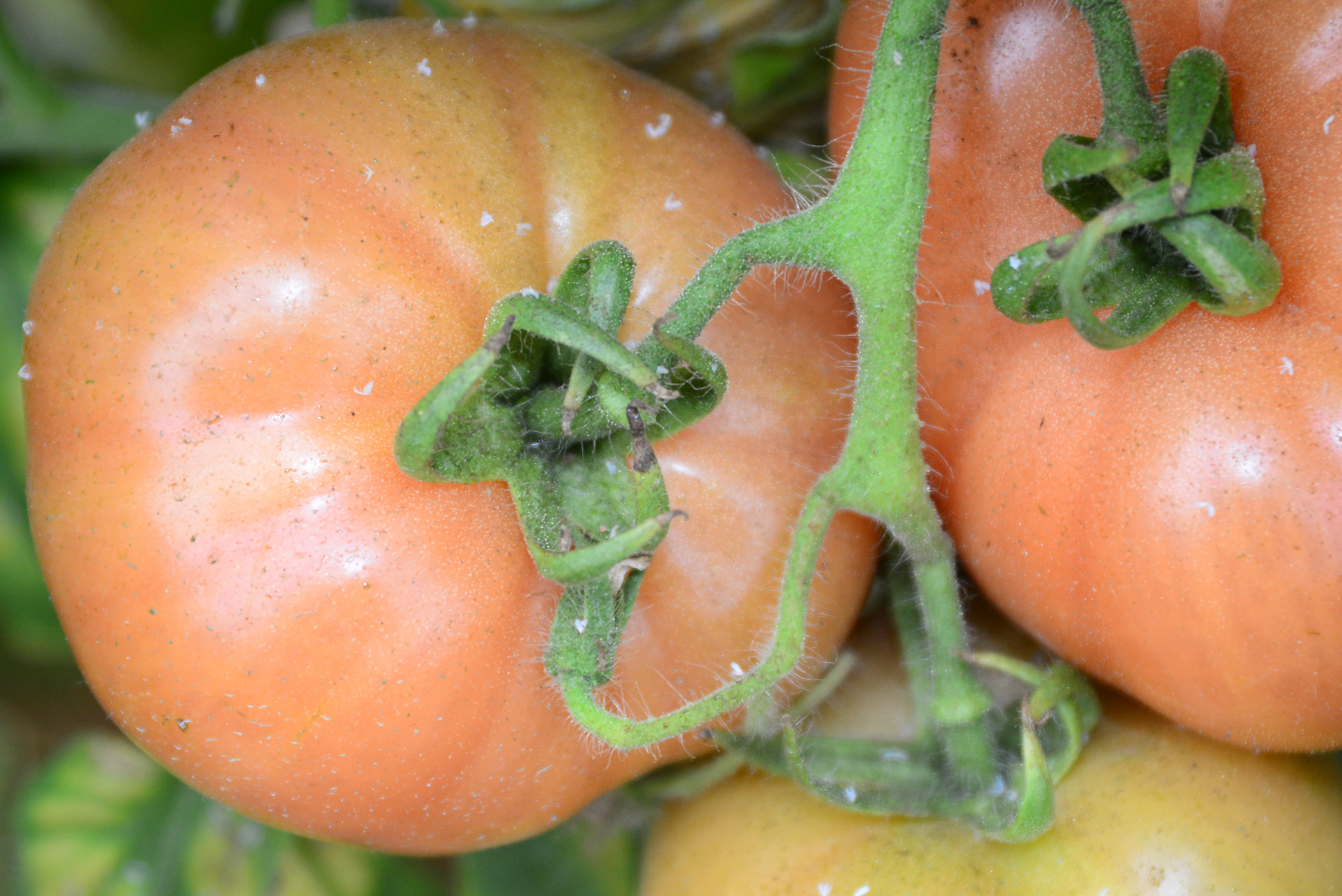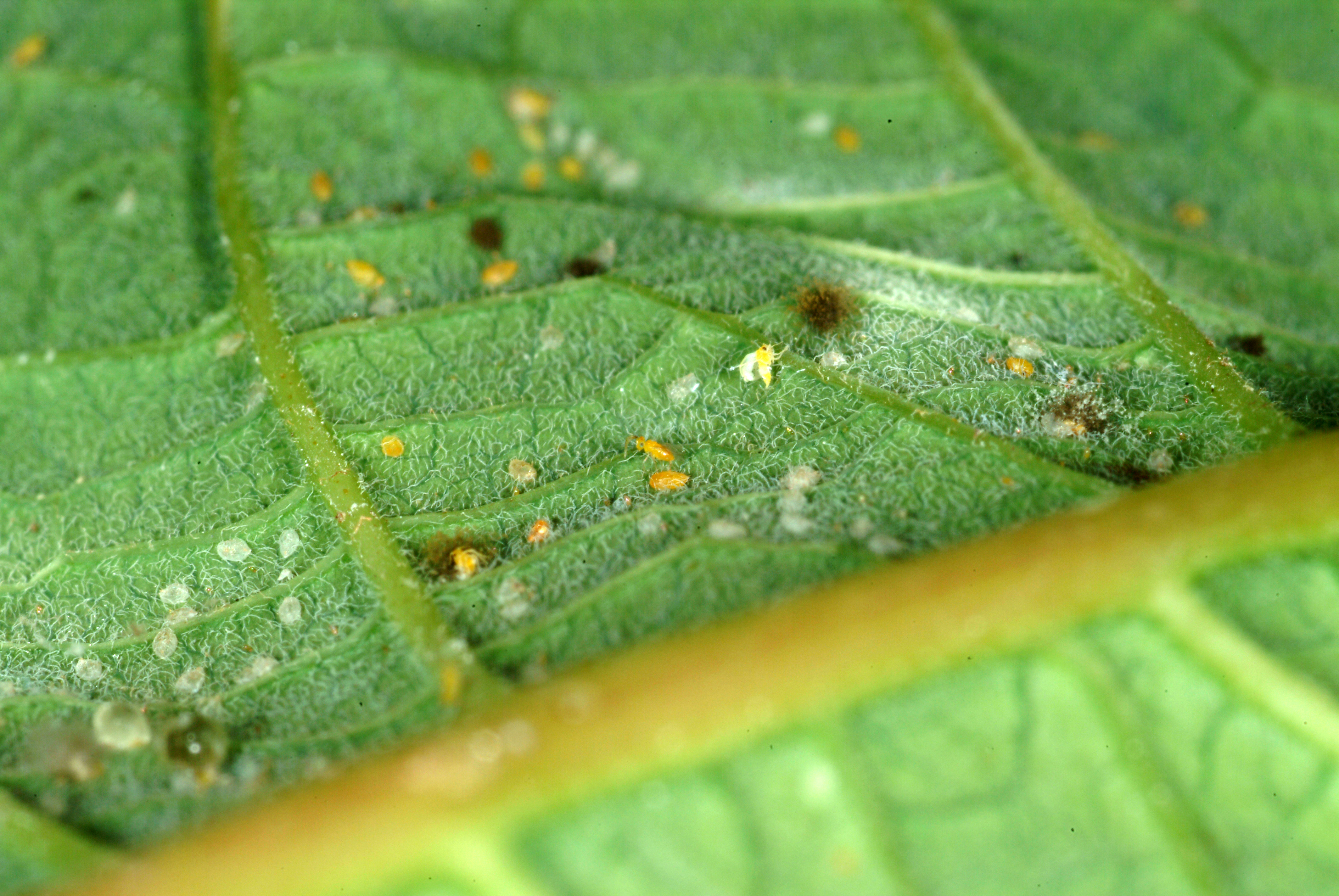Whiteflies
Return to Insect & Other Arthropod Pests
Whiteflies (Bemisia tabaci, B. argentifolii, Trialeurodes vaporariorum, T. abutilonea), such as sweetpotato, greenhouse, and banded wing whiteflies, infest undersides of leaves. Greenhouse whitefly holds its wings flat on its back; sweetpotato whitefly holds its wings vertical and roof-like; and banded wing whitefly has prominent gray bands on its front wings. Whitefly eggs are often laid in arcs or partial circles on undersides of leaves. Immature whiteflies are sedentary, scale-like, light yellow in color, and found on middle and lower leaves. White fly feeding can cause leaf yellowing and generate ripening disorders with tomatoes. Bemisia whiteflies can vector begomoviruses. Whiteflies produce honeydew, which can result in sooty mold fungal growth on plant surfaces.
Whitefly eggs.
(Photo: Ric Bessin, University of Kentucky)

Greenhouse whitefly.
(Photo: Ric Bessin, University of Kentucky)
Banded wing whitefly.
(Photo: Ric Bessin, University of Kentucky)
Sweetpotato whitefly nymph.
(Photo: Ric Bessin, University of Kentucky)

Sweetpotato whitefly.
(Photo: Ric Bessin, University of Kentucky)

Tiny black specks of sooty mold growth on whitefly honeydew secretions.
(Photo: Ric Bessin, University of Kentucky)

The tiny yellow Eretmocerus are stingless parasitic wasps that lay
eggs inside silverleaf whitefly nymphs.
(Photo: Ric Bessin, University of Kentucky)
Management:
- Eliminate weeds in and around structures.
- Monitor for whiteflies with yellow sticky cards.
- Use commercially available minute wasp parasitoids and predators (match with the species of whiteflies present).
- Apply systemic and foliar insecticides.
Biological control:
- Correct identification of the species of whitefly infesting your structure is critical in selecting a biological control organism.
- Two species of tiny stingless wasps can be purchased for release against whiteflies, Encarsia formosa (greenhouse whitefly) and Eretmocerus eremicus (silverleaf or sweet potato whitefly).
- A predatory lady beetle (Delphastus catalinae) can also be released for whitefly suppression.
